What Animals Live In The High Mountains?
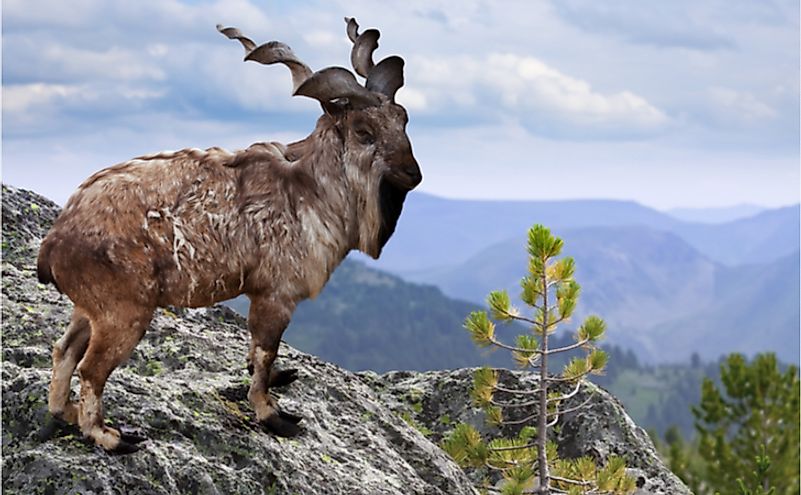
High mountains offer a challenging habitat to animals. Higher the altitude, lower is the oxygen availability and colder is the climate. The terrain at high altitudes is also steep and rugged with little vegetation cover. The species inhabiting such landscapes have special adaptations to withstand the cold and low oxygen levels. They also are more sure-footed and powerful to be able to catch prey or escape predators in the difficult terrain. Some of the animals that are found in the high mountain areas of the world have been mentioned below.
8. Snow Leopard -
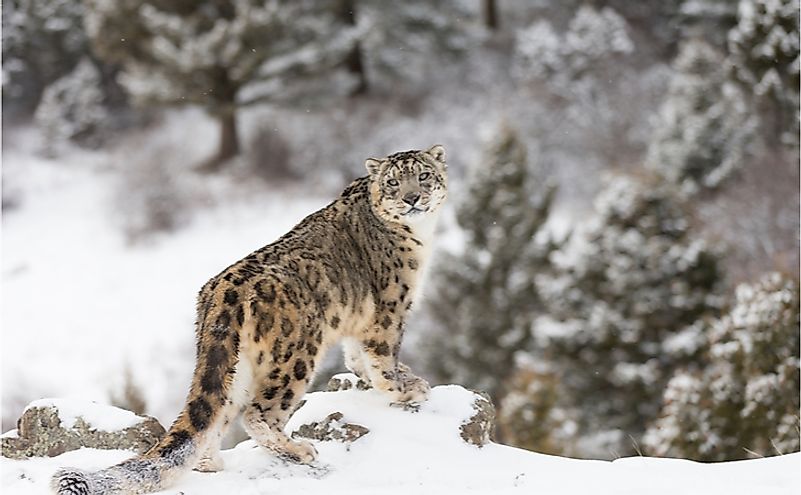
Panthera uncia, often called the "ghost of the mountains" due to its elusive and solitary nature, is a large felid inhabiting the mountain ranges of South and Central Asia. An estimated 10,000 mature individuals of this species exist in the wild. Its habitat includes alpine and subalpine zones at elevations ranging from 3,000 to 4,500 m. It actively hunts prey like markhor, Himalayan blue sheep, wild goat, Himalayan tahr, etc. Poaching and habitat loss to infrastructural development threaten the survival of this species. The IUCN lists the species as Vulnerable.
7. Kiang -
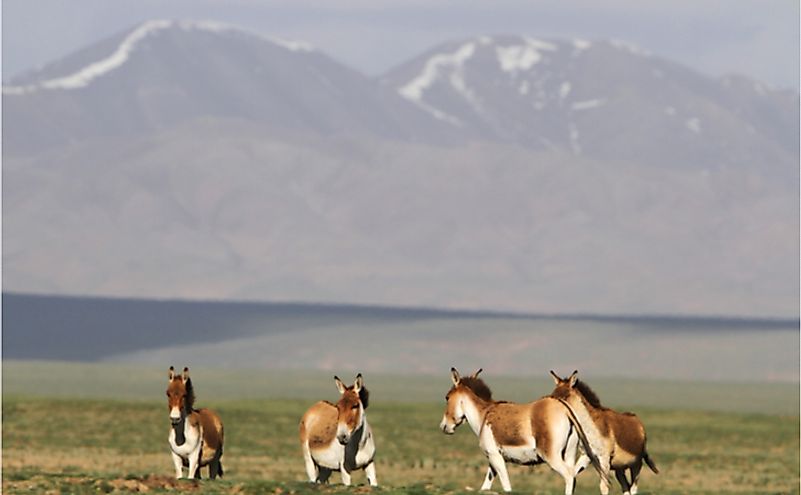
Equus kiang is the largest wild ass species. It occurs in the alpine and montane grasslands of the Tibetan Plateau. Northern Nepal, and Ladakh in India. The kiang is one of the several inspirations for the unicorn. It is a herbivore that feeds on sedges and grasses. Wolf and humans are the main predators of the kiang in their habitat. It lives in groups of variable size. IUCN enlists the kiang as a Least Concern species on the Red List.
6. Markhor -
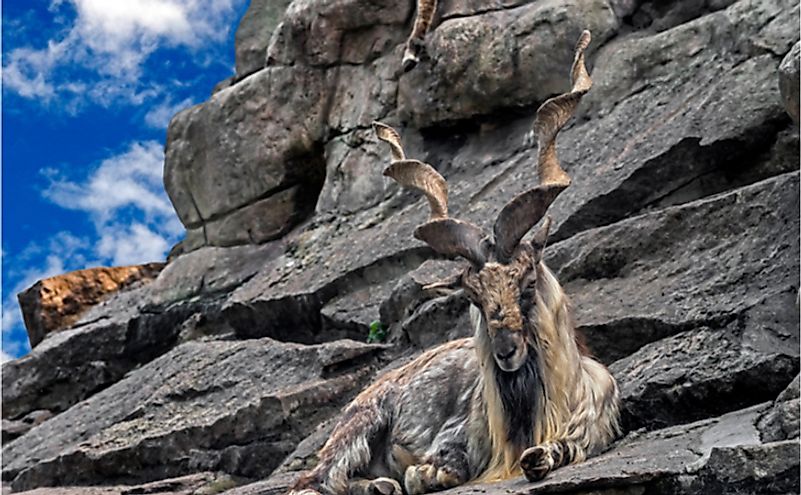
Capra falconeri is a capra species found in the Himalayas, Karakoram, and Central Asian mountains. It is the national animal of Pakistan. This species is well-adapted to live in the mountains where it is found at elevations ranging from 600 to 3,600 m. Scrub forests are its preferred habitat. It is listed as a Near Threatened species on the IUCN Red List. These animals are diurnal creatures that graze in summers and spring and browse in winters. Markhors are good prey for many carnivores like snow leopards, lynx, jackals, brown bears, and even golden eagles. Hunting for meat and trade of body parts are the biggest threats to this species.
5. Vicuña -
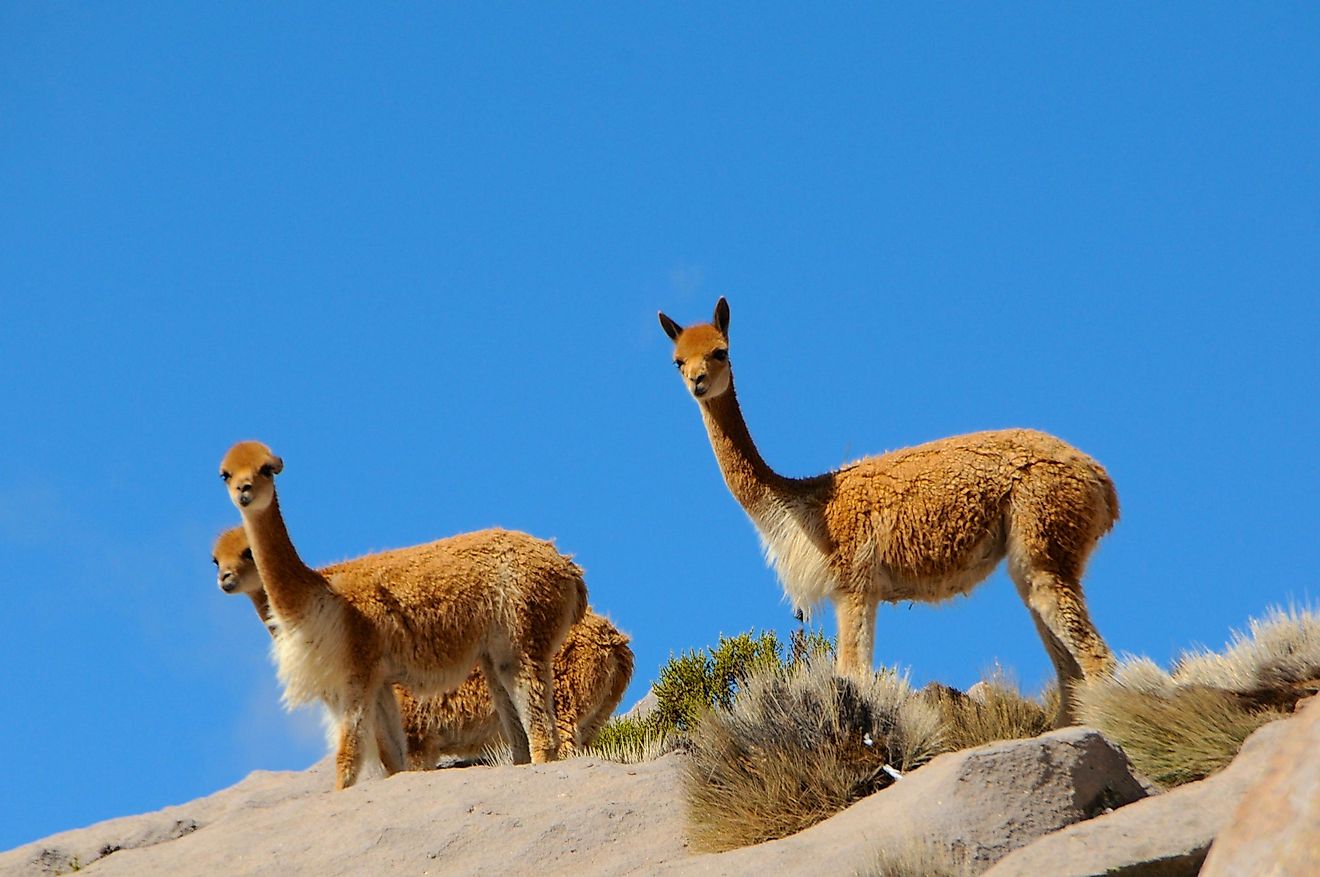
The Vhabitats in the Andes is one of the two wild camelids found in South America, the other being the guanaco. It lives in the high alpine habitats in the Andes. The vicuñas are valued for their wool which is soft and warm and can be obtained only once in three years from an individual. It is the national animal of Peru and features on the Peruvian coat of arms. The conservation of these camelids is a success story as at one time, these animals were almost hunted to extinction and now their numbers have recovered to about 350,000.
4. Himalayan Brown Bear -
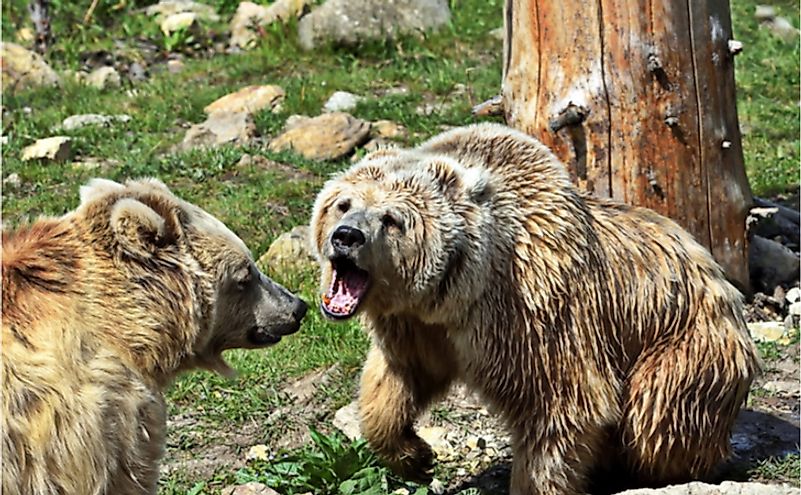
The Ursus arctos isabellinus, also called the Himalayan red bear, is a brown bear subspecies found in the mountainous regions of Afghanistan, northern Pakistan, north India, Nepal, and West China. They are omnivorous animals that hibernate during winter in their dens. Although the brown bear population is enlisted as Least Concern by the IUCN, the Himalayan subspecies is highly threatened and have dwindling populations. They are poached for their fur, claws, and internal organs that are used for ornamental purposes and traditional medicines. They are also persecuted by farmers who regard them as a threat to their livestock and crops. The natural habitat of this species is also fast disappearing.
3. Himalayan Tahr -
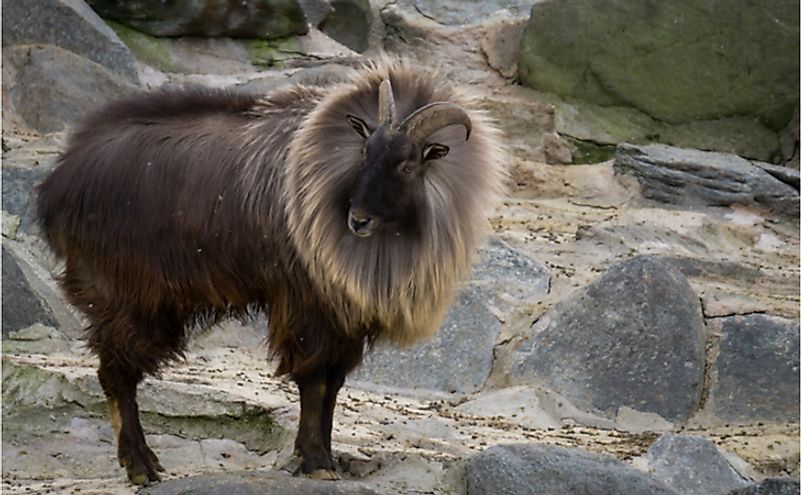
The Hemitragus jemlahicus is an even-toed ungulate found in the Himalayas in India, Nepal, and southern Tibet where they range from 2,500 to 5,000 m. The Himalayan tahr spends most of its time browsing or grazing with grasses constituting 75% of the tahr's diet. It is a Near Threatened species that is imperiled by habitat loss and hunting.
2. Tibetan Antelope -
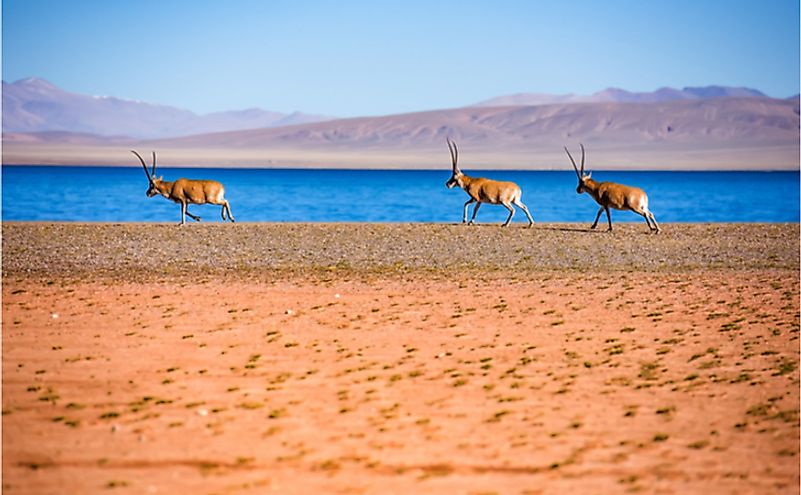
Also called Chiru, the Pantholops hodgsonii, is a medium-sized bovid found in the Tibetan Plateau where they inhabit the cold steppe and alpine environments at elevations ranging from 3,250 to 5,500 m above sea level. Only around 150,000 mature individuals of this species survive in the wild. In the past, these animals were subjected to heavy illegal poaching that severely endangered their populations. They are hunted for their underfur called shahtoosh which is used to make luxury shawls. Around 3 to 5 adult antelopes are killed to make one shahtoosh and sold at prices ranging from $1,000 to $5,000 in India.
1. Tibetan Sand Fox -
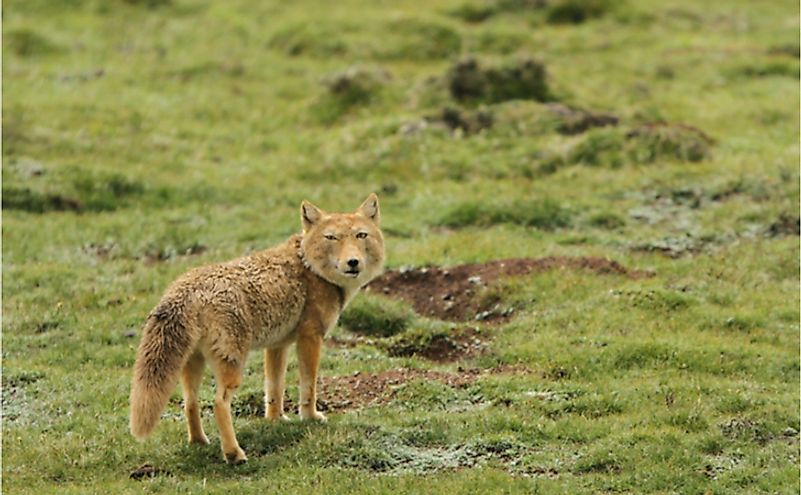
The Vulpes ferrilata is a true fox species found only in the high Tibetan Plateau, Ladakh Plateau, and the Himalayas. It has been spotted living at altitudes as high as 5300 m. Plateau pikas, rodents, hares, etc., are the common prey of these foxes. They also scavenge carcasses of large animals. They often form commensal relationships with brown bears while hunting for pikas. As the bears dig out the pikas from their burrows, the foxes grab them when they try to escape the bears. IUCN categorizes the species as Least Concern on the Red List.











